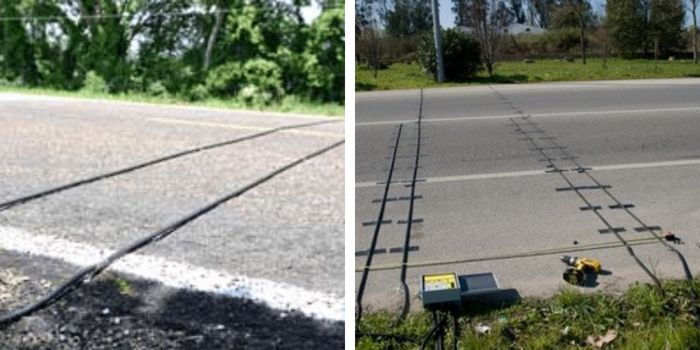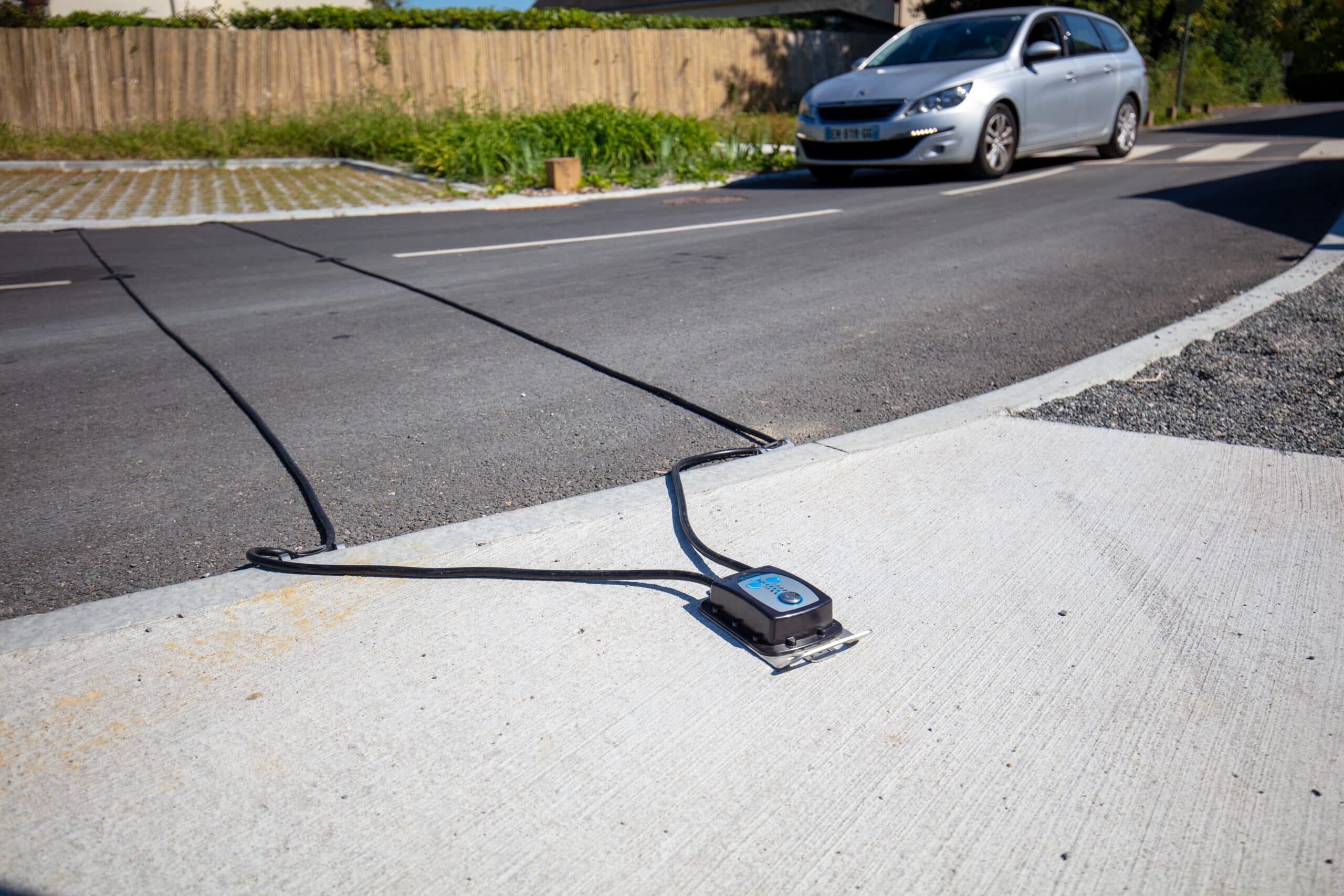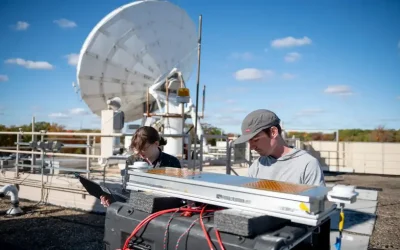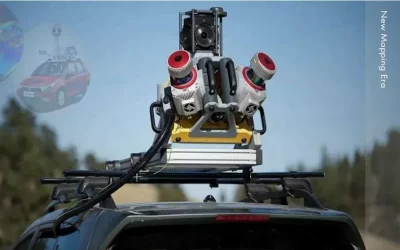Pneumatic Road Tubes or traffic counters for traffic surveys
Pneumatic road tubes (PRT), also known as pneumatic road traffic counters, are devices used for traffic monitoring and data collection on roadways. These tubes are made of durable rubber or plastic and are typically placed across the road surface to measure vehicle movements, including traffic volume, speed, axle load and classification.
How do pneumatic road tubes work?
The pneumatic road tubes work by detecting changes in pressure caused by vehicles passing over them. They consist of flexible rubber or plastic tubes filled with air. When a vehicle’s tires run over the tube, it compresses, causing a pressure change that is recorded by a monitoring device. They are usually connected to a data collection device, such as a traffic counter or a data logger, which records the information collected from the tubes. The tubes are typically installed perpendicular to the direction of traffic flow, and multiple tubes may be used to gather data on different lanes or directions.
Applications of pneumatic road tubes
Pneumatic road tubes are commonly used by transportation agencies, traffic engineers, and researchers to collect data for various purposes, such as traffic planning, roadway design, safety analysis, and traffic impact assessments. The data collected from these tubes can provide valuable insights into traffic patterns, vehicle volumes, speed distributions, and other traffic-related parameters, which can aid in informed decision-making regarding road design, maintenance, and traffic management, and therefore helping improve road safety and efficiency.
 Pneumatic road tubes are relatively simple and cost-effective devices for traffic monitoring, and they are widely used in many countries around the world. However, they do have some limitations, such as sensitivity to weather conditions e.g. rain, potential damage from heavy vehicles, and occasional inaccuracies in data collection if they are not properly calibrated. Therefore, it’s important to carefully design and install pneumatic road tubes to ensure reliable and accurate data collection.
Pneumatic road tubes are relatively simple and cost-effective devices for traffic monitoring, and they are widely used in many countries around the world. However, they do have some limitations, such as sensitivity to weather conditions e.g. rain, potential damage from heavy vehicles, and occasional inaccuracies in data collection if they are not properly calibrated. Therefore, it’s important to carefully design and install pneumatic road tubes to ensure reliable and accurate data collection.
Pneumatic road tubes help in identifying congestion points, peak traffic hours, and the effectiveness of traffic signals and signs. This data is used to optimize traffic flow and improve general road safety. Many factors such as tube placement, maintenance, and calibration of monitoring equipment can affect data accuracy. Hence, proper installation and regular maintenance are essential to ensure reliable data collection.
Installation procedure of PRT
 Pneumatic road tubes can be set up to be either permanent or temporary. Temporary configurations are usually only installed for about a day. Permanent installations are linked up to a counter device that’s kept in a permanent roadside lock box. For the more-common temporary setup, the tubes are a stretched across the road perpendicular to traffic until there’s very little slack. On one end, they’re held in place in the road using a concrete nail and the tube is pinched shut. On the other end, the tube is fed into a counter device that is chained to a street sign or post to make sure it doesn’t go anywhere or get stolen.
Pneumatic road tubes can be set up to be either permanent or temporary. Temporary configurations are usually only installed for about a day. Permanent installations are linked up to a counter device that’s kept in a permanent roadside lock box. For the more-common temporary setup, the tubes are a stretched across the road perpendicular to traffic until there’s very little slack. On one end, they’re held in place in the road using a concrete nail and the tube is pinched shut. On the other end, the tube is fed into a counter device that is chained to a street sign or post to make sure it doesn’t go anywhere or get stolen.
A single pneumatic road tube is most commonly used to simply count the number of cars on the road, as well as time the gaps between individual vehicles. If two pneumatic road tubes are set up spaced slightly apart, the counter can track the number of axles a vehicle has to better determine each individual vehicle’s class, the direction of traffic and the speed at which vehicles are moving.
Cost of pneumatic road tubes
The cost of acquiring the equipment and installation for Permanent One (1) lane is approx. US $5,000 and permanent four (4) lanes is approx. US $9,000. If you need official quotation, you can WhatsApp or e-mail us.













